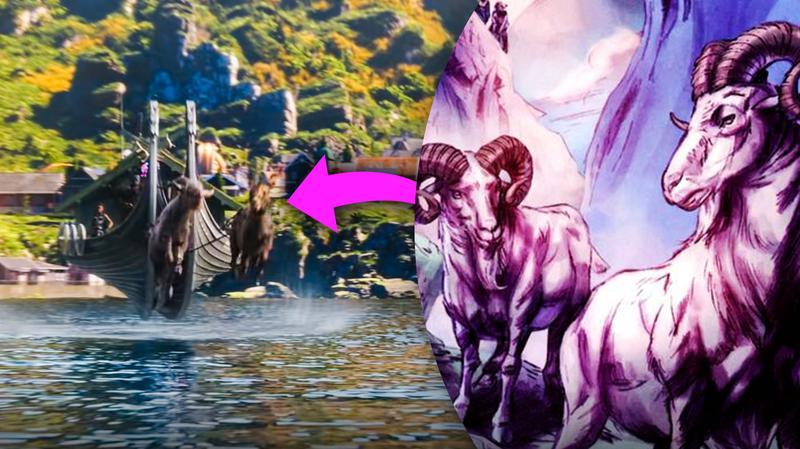
There are plenty of examples of how Marvel Studios has evolved creativity throughout the years, but one of the best projects to showcase this is Chris Hemsworth’s Thor: Love and Thunder. The film recently released its first teaser trailer, and it sure looks like director Taika Watiti’s brand of insanity is intact at dialed to eleven. It’s hard to believe such a movie exists in the MCU; that the story, and Marvel in general, would get around to adapting the material seen here.
Asgard is now one of the biggest tourist attractions on Earth, Thor is a peace-advocating guru going on a journey to discover himself, and Jane Foster now wields his former hammer. If someone were to tell fans 15 years ago that this movie was going to exist, they’d have thought you were Marc Spector levels of crazy.
In response to the new trailer, a former writer for 2011’s Thor has acknowledged how he knows for a fact that Marvel Studios has loosened up creatively. How? Well, it all goes back to Thor’s flying goats.
The Rejected Idea of Thor’s Goats

In some recent Tweets, original Thor writer Zack Stentz revealed some interesting new information about alternate ideas that could have played in the film's original drafts.
In response to the big reveal of Tanngrisnir and Tanngnjóstr (Thor’s flying goats) in the new Love and Thunder trailer, Stentz tweeted that “Marvel has loosened up creatively” since his time at the studio, because when he originally wanted to use those same goats for the 2011 movie, “[Marvel Studios President Kevin Fiege] and company looked at [them] like [they] were crazy:”
“A big way I know Marvel has loosened up creatively since Phase I is that we proposed Thor riding to battle in his goat chariot pulled by Tanngrisnir and Tanngnjóstr back in 2009 and Feige & company looked at us like we were nuts. Now there they are in the L&T trailer!”
He followed that tidbit up with some interesting facts about the flying animals from original Norse mythology, including how Thor “kills and eats them” when he gets hungry on the road, only for the two to be “magically resurrected the next day” none the wiser:
“A weird thing about Thor's goats from original Norse mythology is that when he's on the road and gets hungry, he kills and eats them in the evening, then they magically resurrect the next day and seem totally fine with that state of affairs and keep pulling his chariot.”
Before going dark, the writer also responded to a question asking if it was true he pushed to use Led Zeppelin for Thor, to which he responded that “Immigrant Song”, first heard within the MCU during Ragnarok, “was literally Thor’s fight music in the first three or four drafts.”
Phase 4’s Creativity Gets Dialed Up
In retrospect, it would have been an entirely different vibe to see Thor’s goats all the way back in 2011. In many ways, Marvel Studios had to ease the general audiences into all of these more far-fetched ideas.
Somehow, fans live in a timeline where a talking raccoon and tree are household names. Not only that, but they are part of a galactic gang of misfits fueled by '80s music - a wild feat.
If Marvel Studios can pull that off, the creatives on board must feel like they can do anything. This is great for the fans; after all, that’s how the world gets projects like Moon Knight, She-Hulk, and Eternals.
The MCU’s immense success has allowed Marvel Studios President Kevin Feige and co. to pull off what once was unimaginable. Not only that, but those risks trickle over to other franchises. A Wonder Twins series was just greenlit for the DCEU, and a Blue Beetle movie has nearly started production as well.
Thor: Love and Thunder releases in theaters on July 8.












